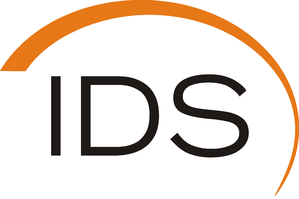Multi Resonances and Multi Limit Cycles
| Led by: | Lars Panning-von Scheidt |
| E-Mail: | marhenke@ids.uni-hannover.de |
| Team: | Niklas Marhenke |
| Year: | 2024 |
| Duration: | 01.08.2020-31.07.2024 |
Projectdescribtion
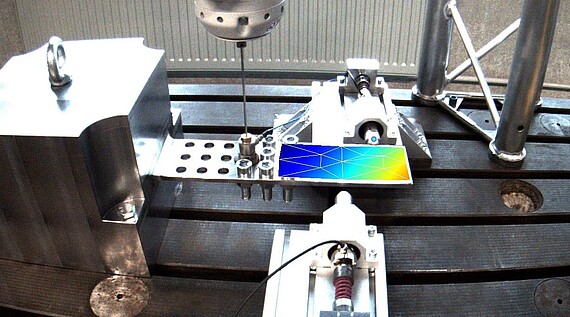
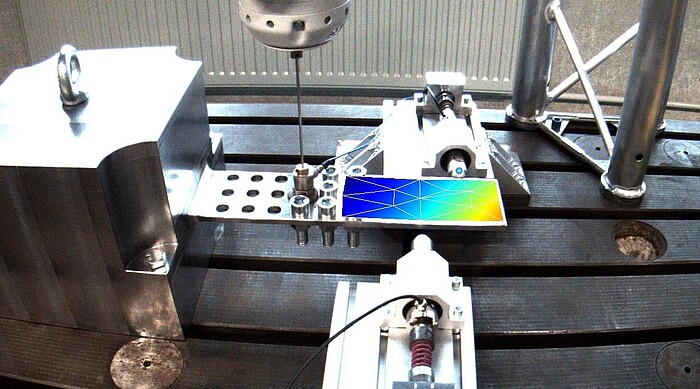
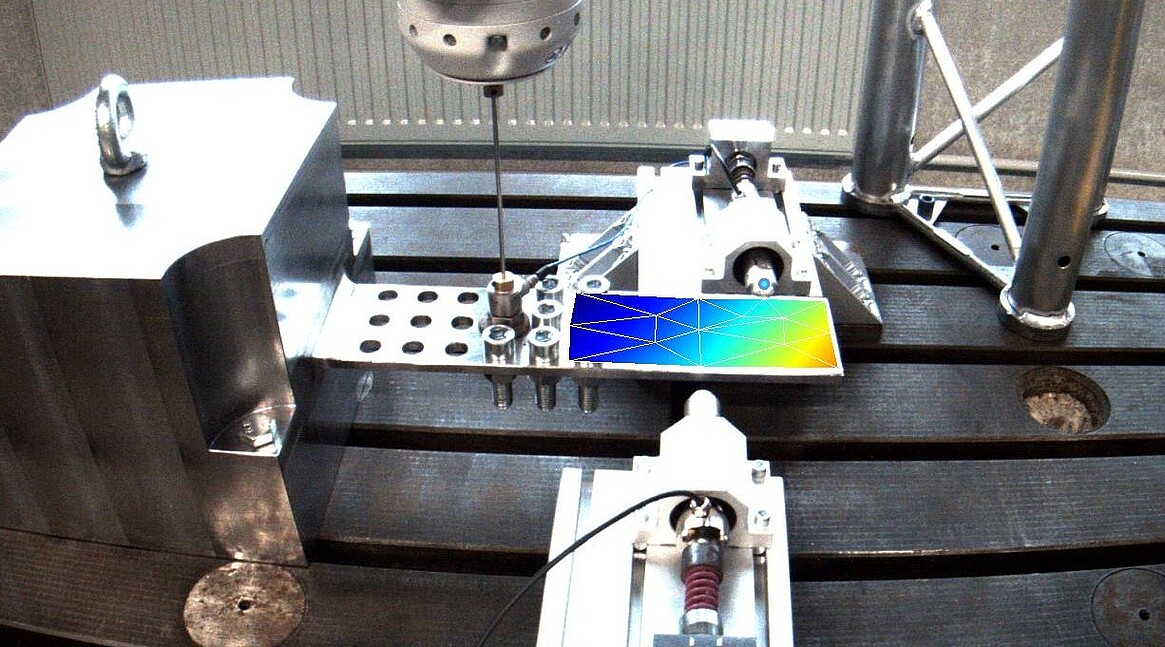
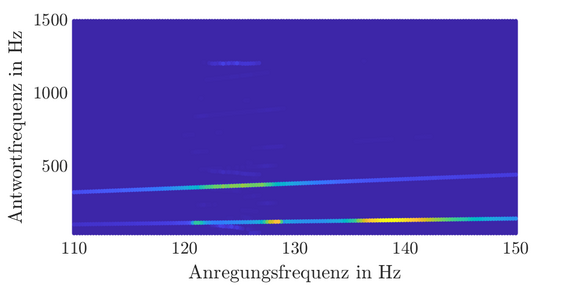
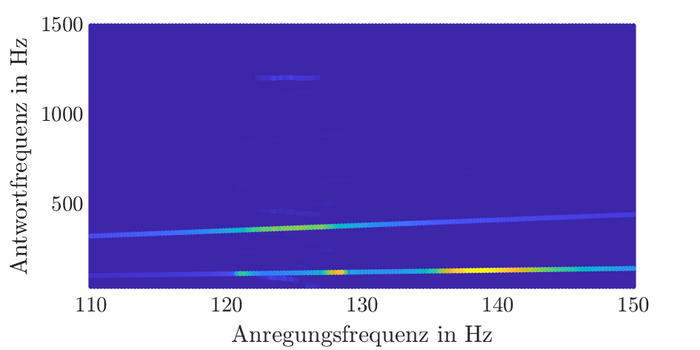
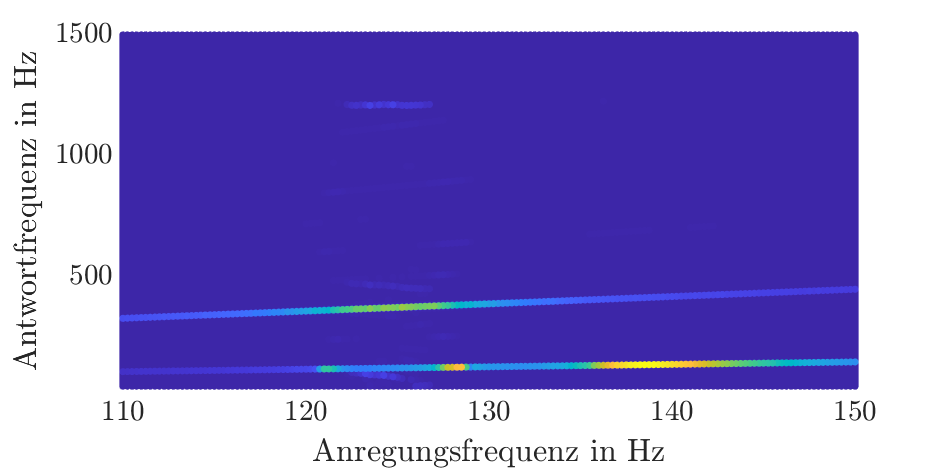
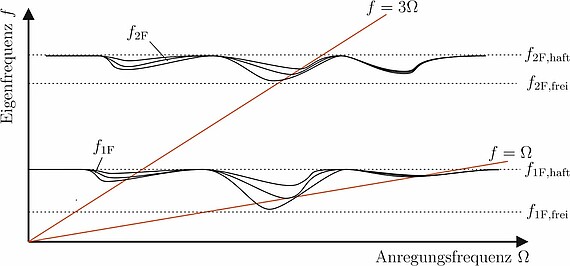
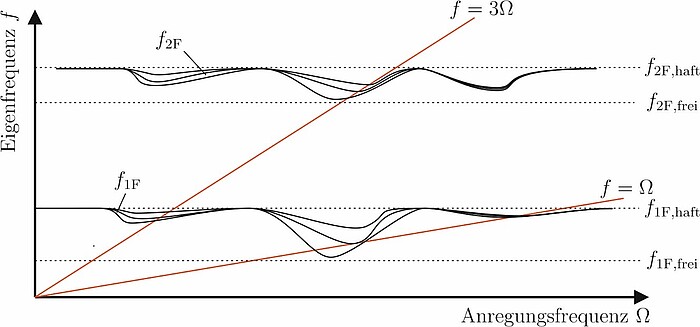
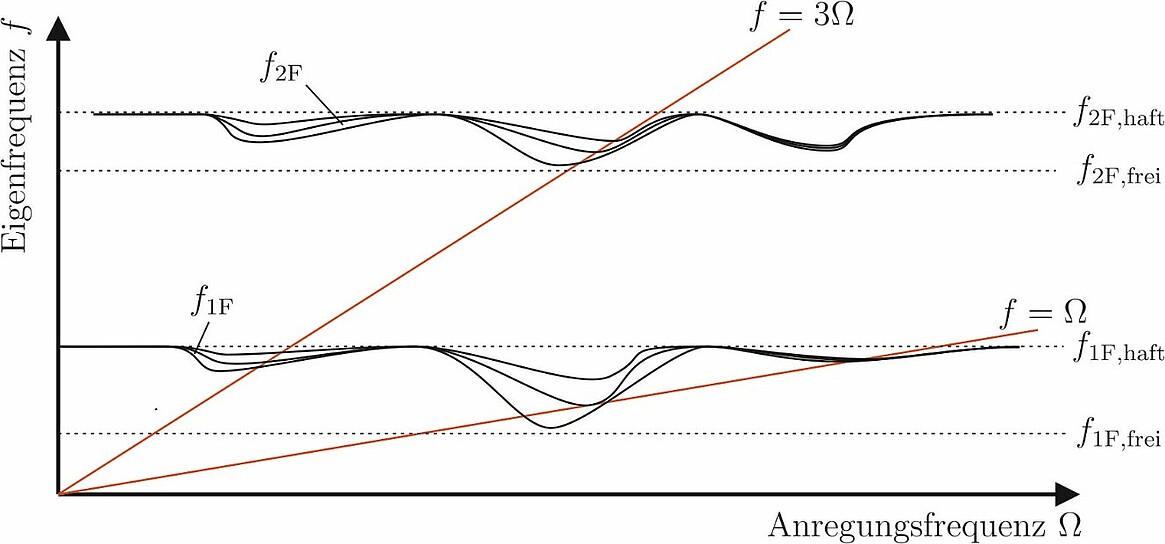
Multi resonances describe the phenomenon that several modes of a oscillating system are simultaneously excited in resonance. Due to the non-linearity, interactions occur; the mechanism and consequences of these are investigated within the project. For this purpose, an experimental test rig, which resembles a vibrating beam clamped on one side, is being developed with a friction mechanism as a non-linearity. As the energy flow of periodically excited non-linear systems is not limited to the excitation frequency, but also occurs at other harmonic oscillation frequencies, the investigation of various multi resonances is one aim of the project. On the one hand, the natural frequencies can be brought into a desired ratio using additional masses. On the other hand, variable positioning of the friction mechanism allows the natural frequencies to be adjusted for the sticking case, so that various 1:n-multi resonances can be measured. The different modeshapes of the interacting modes enable different changes in the individual natural frequencies. Figure 1 shows the setup with a measured modeshape.
The excitation of the resonance case of a mode results in a drop in all natural frequencies due to the increased onset of friction, so that several resonance cases of other modes are possible. Figure 3 shows the development mechanism qualitatively.
As a result of these findings, an existing test specimen, which represents a vibrating turbine blade rig, is examined with regard to possible multi resonances. When simulating the phenomenon for the case of self-excitation, the occurrence of quasi-periodic solutions due to closely neighboring modes is much more likely compared to external excitation. Therefore, the development of a similar test rig focuses on the coupling of two modes close to a 1:1-ratio. As the structure of the test specimen is to be retained, but the tuning of two natural frequencies to this ratio by means of a beam is too restrictive in terms of design, a test rig is designed, where two beams are coupled via a spring so that the desired effects can be realized.
